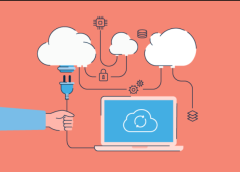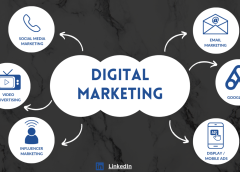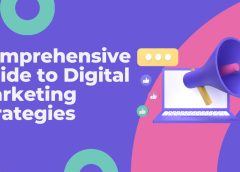Introduction: In today’s interconnected digital landscape, cloud computing has emerged as a cornerstone of modern technology infrastructure. From multinational corporations to small businesses and individual users, the cloud offers unparalleled flexibility, scalability, and accessibility. In this article, we’ll explore the intricate ecosystem of cloud computing, shedding light on the roles of cloud consumers, direct consumers, and service providers. By understanding these key players, you’ll gain insights into how cloud computing powers innovation, drives efficiency, and transforms industries worldwide.
1. Who are the Cloud Consumers? Cloud consumers encompass a broad spectrum of entities that leverage cloud computing services to fulfill their computing needs. These entities may include enterprises, government agencies, educational institutions, startups, and even individual users. By migrating their operations to the cloud, these consumers gain access to a vast array of resources, including virtual servers, storage solutions, software applications, and development platforms. Whether it’s deploying mission-critical applications, storing massive datasets, or enabling remote collaboration, cloud consumers rely on cloud infrastructure to drive productivity, agility, and cost-effectiveness.
2. Who are the Direct Consumers? Direct consumers, also known as end-users or clients, represent the individuals or entities that directly interact with cloud-based services and applications. Unlike cloud consumers, who deploy and manage cloud resources at an organizational level, direct consumers engage with cloud services on a more granular level to fulfill specific tasks or objectives. For example, a direct consumer might use a cloud-based email service for communication, a cloud storage platform for file sharing, or a cloud-based CRM system for managing customer relationships. By leveraging these services, direct consumers benefit from seamless access to cutting-edge technology without the need for extensive technical expertise or infrastructure investments.
3. Cloud Service Providers At the heart of the cloud ecosystem are cloud service providers (CSPs), the entities responsible for delivering and managing cloud computing services. These providers operate massive data centers equipped with state-of-the-art infrastructure, including servers, networking equipment, and storage systems. CSPs offer a wide range of service models, including Infrastructure as a Service (IaaS), Platform as a Service (PaaS), and Software as a Service (SaaS), catering to diverse customer needs and preferences. Leading CSPs such as Amazon Web Services (AWS), Microsoft Azure, and Google Cloud Platform (GCP) have established themselves as industry giants, powering everything from online retail and streaming media to artificial intelligence and machine learning applications.
Additional Insights: Beyond the core players in the cloud ecosystem, it’s essential to recognize the broader impact of cloud computing on society and the economy. Cloud technology not only enables organizations to streamline operations and reduce costs but also fosters innovation and entrepreneurship. Startups and small businesses, in particular, benefit from the democratization of technology offered by the cloud, allowing them to compete on a level playing field with larger enterprises.
Cloud computing serves as a catalyst for innovation, providing a platform for experimentation and rapid prototyping. By leveraging cloud-based development tools and services, developers can bring new ideas to market more quickly and cost-effectively than ever before. This accelerated pace of innovation has fueled the emergence of disruptive technologies such as artificial intelligence, machine learning, Internet of Things (IoT), and blockchain.
Moreover, cloud computing plays a pivotal role in driving digital transformation across industries, from healthcare and finance to manufacturing and entertainment. Organizations are increasingly turning to cloud-based solutions to modernize legacy systems, enhance collaboration, and improve customer experiences. By harnessing the power of data analytics and machine learning algorithms, businesses can gain valuable insights into customer behavior, market trends, and operational efficiencies.
As organizations embrace cloud-native architectures and adopt agile methodologies, they can rapidly innovate and adapt to changing market dynamics. Cloud-native development practices, such as microservices, containerization, and continuous integration/continuous deployment (CI/CD), enable teams to deliver software updates with greater speed, stability, and scalability. This agility is essential for staying competitive in today’s fast-paced digital economy.
Looking ahead, the continued evolution of cloud computing is poised to reshape entire industries, fueling growth, innovation, and prosperity on a global scale. As cloud technology matures and becomes more pervasive, we can expect to see even greater convergence between digital and physical worlds, leading to new opportunities and challenges for businesses and society as a whole.
Conclusion: In conclusion, navigating the complex landscape of cloud computing requires a nuanced understanding of the various stakeholders involved. From cloud consumers and direct consumers to cloud service providers, each player contributes to the seamless operation and continuous innovation of the cloud ecosystem. By harnessing the power of cloud computing, organizations and individuals alike can unlock new opportunities, drive growth, and stay ahead in an ever-evolving digital world.






